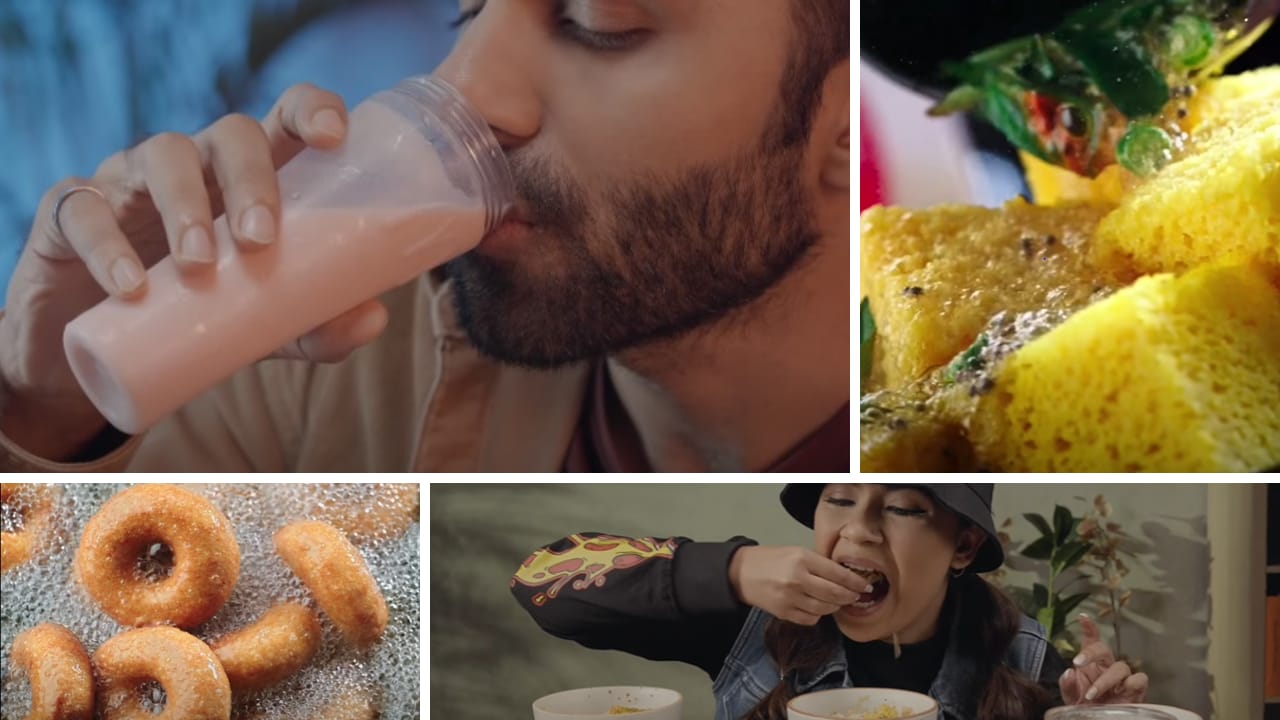When food brands in India were busy scripting soul-touching and sentimental films for Diwali this year, homegrown ready-to-cook foods and spices company Nilon’s decided to tune into a new approach of storytelling. The brand made a 30-second film using ASMR (autonomous sensory meridian response). Through the video, viewers could hear the sharpness of a knife on a chopping board, spice crackling, a blender whizzing, sizzling snacks and sweets frying up. And a perfect shot of tadka that hit the right spot for many viewers.
ASMR is also called “brain massage”. It’s triggered by placid sights and sounds such as whispers, accents, and crackles. Content creators on YouTube Shorts, Instagram Reels, and TikTok, have been actively using ASMR to grab viewers’ attention.
Kiran Giradkar, chief marketing officer of Nilon’s tells Storyboard18 that the company has always targeted women in the age group of 25-45. With the recent commercial, the brand is trying to expand its audience base. According to Giradkar, Gen Z and the millennials are open to experimentation and trying new brands if they see an interesting piece of content on social media and when they see a product innovation.
The food category is cluttered and standing out is always a challenge, believes Giradkar. The brand’s choice of using ASMR in the communication piece was to create an immersive experience, he adds.
Food and grocery delivery app Swiggy, through its recent set of films, has also used ASMR as its central theme. Through this new series, the brand has created mukbang videos. Mukbang, a Korean word, is typically videos of people eating a large quantity of food. Viewers can see and hear the mukbangers eat burgers, chaat, french fries, and a lot more, for three minutes. Brands like Nescafe, Vistara and SKODA India, among others, have also marketed their products by leveraging the power of ASMR in the recent past.
Abbas Mirza, co-founder and creative head of Tales N Talkies Media, says that with the rise of smart devices, consumers understand the power of voice. Backed by research, it is understood that ASMR has a significant impact on an individual’s feelings. Globally, sectors like automobiles, mobile and FMCG will be adding ASMR to their marketing communications gameplan.
Mirza thinks detergents as a category could also use ASMR in content and Giradkar believes the sports industry could benefit from it too.
Himanshu Arora, co-founder of Social Panga, says, “ASMR gives brands an opportunity to think about their product from a sensory perspective.” ASMR allows brands to connect with the consumer at a very deep level and helps marketers have better metrics like click-through rate, among others. However, these experts say, brands should use ASMR only if they have a unique script and only if they have an audience for it.
“ASMR should not be used by brands just because it is a trend and other brands are tapping into this concept. Otherwise, chances are that people might ignore it if the commercials fail to appeal,” says Mirza. When a marketer understands her or his brand and what it has to offer at a deep level, they will understand which relevant sounds in the commercial will generate mass appeal, he concludes.
